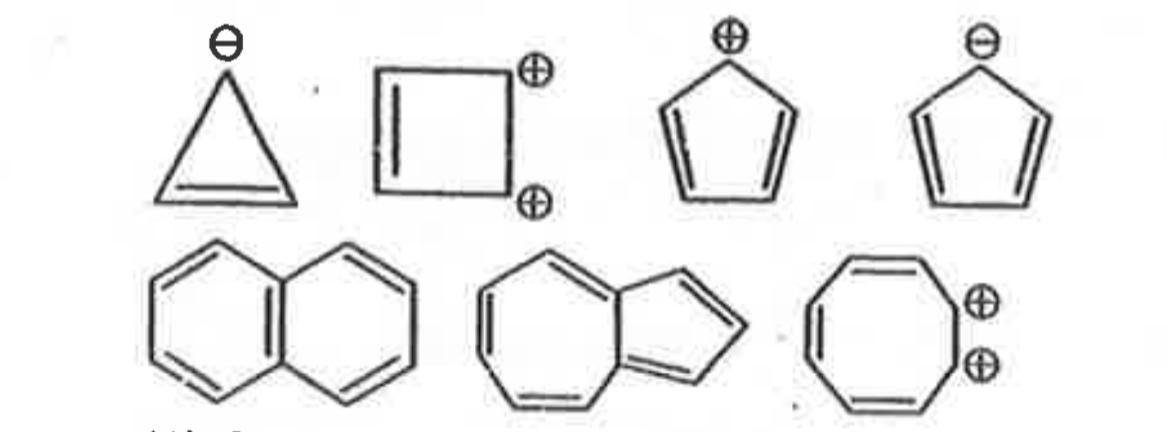Among the following, identify the species with an atom in +6 oxidation state.
Ba2XeO6
XeO3
CrO5
SO2Cl2
The correct Answer is:BCD
To determine which species has an atom in the +6 oxidation state, we will analyze the oxidation states of the elements in the given compounds. Let's break down the process step by step.
Step 1: Understand Oxidation State
The oxidation state (or oxidation number) indicates the total number of electrons an atom gains or loses when forming a chemical bond. Elements can have positive or negative oxidation states based on their tendency to lose or gain electrons.
Hint: Remember that metals typically have positive oxidation states, while non-metals can have negative or positive oxidation states depending on their electron configuration.
Step 2: Analyze Each Species
We will evaluate the oxidation states of the relevant elements in each species provided in the question.
1. Species 1: XCO3
- Let the oxidation state of xenon (Xe) be x.
- Oxygen (O) has an oxidation state of -2.
- There are three oxygen atoms, contributing a total of -6.
- The overall charge of the molecule is neutral (0).
- Therefore, the equation is:
x+(−6)=0⟹x=+6
- Conclusion: Xenon in XCO3 has an oxidation state of +6.
2. Species 2: SO2Cl2
- Let the oxidation state of sulfur (S) be x.
- Oxygen (O) has an oxidation state of -2, and there are two oxygen atoms contributing -4.
- Chlorine (Cl) has an oxidation state of -1, and there are two chlorine atoms contributing -2.
- The overall charge is neutral (0).
- Therefore, the equation is:
x+(−4)+(−2)=0⟹x−6=0⟹x=+6
- Conclusion: Sulfur in SO2Cl2 has an oxidation state of +6.
3. Species 3: ClO3
- Let the oxidation state of chlorine (Cl) be x.
- Oxygen (O) has an oxidation state of -2, and there are three oxygen atoms contributing -6.
- The overall charge is neutral (0).
- Therefore, the equation is:
x+(−6)=0⟹x=+6
- Conclusion: Chlorine in ClO3 has an oxidation state of +5, not +6.
4. Species 4: BaO2
- Let the oxidation state of barium (Ba) be +2.
- Oxygen (O) has an oxidation state of -2, and there are two oxygen atoms contributing -4.
- The overall charge is neutral (0).
- Therefore, the equation is:
2+(−4)=0⟹−2=0 (not applicable)
- Conclusion: Barium does not have an oxidation state of +6.
Final Conclusion
The species with an atom in the +6 oxidation state are:
- XCO3 (Xenon)
- SO2Cl2 (Sulfur)
Summary of the Answer
The species with an atom in +6 oxidation state are:
- XCO3 (Xenon)
- SO2Cl2 (Sulfur)
The oxidation state (or oxidation number) indicates the total number of electrons an atom gains or loses when forming a chemical bond. Elements can have positive or negative oxidation states based on their tendency to lose or gain electrons.
We will evaluate the oxidation states of the relevant elements in each species provided in the question.
- Let the oxidation state of xenon (Xe) be x.
- Oxygen (O) has an oxidation state of -2.
- There are three oxygen atoms, contributing a total of -6.
- The overall charge of the molecule is neutral (0).
- Therefore, the equation is:
x+(−6)=0⟹x=+6
- Conclusion: Xenon in XCO3 has an oxidation state of +6.
- Let the oxidation state of sulfur (S) be x.
- Oxygen (O) has an oxidation state of -2, and there are two oxygen atoms contributing -4.
- Chlorine (Cl) has an oxidation state of -1, and there are two chlorine atoms contributing -2.
- The overall charge is neutral (0).
- Therefore, the equation is:
x+(−4)+(−2)=0⟹x−6=0⟹x=+6
- Conclusion: Sulfur in SO2Cl2 has an oxidation state of +6.
- Let the oxidation state of chlorine (Cl) be x.
- Oxygen (O) has an oxidation state of -2, and there are three oxygen atoms contributing -6.
- The overall charge is neutral (0).
- Therefore, the equation is:
x+(−6)=0⟹x=+6
- Conclusion: Chlorine in ClO3 has an oxidation state of +5, not +6.
- Let the oxidation state of barium (Ba) be +2.
- Oxygen (O) has an oxidation state of -2, and there are two oxygen atoms contributing -4.
- The overall charge is neutral (0).
- Therefore, the equation is:
2+(−4)=0⟹−2=0 (not applicable)
- Conclusion: Barium does not have an oxidation state of +6.
The species with an atom in the +6 oxidation state are:
- XCO3 (Xenon)
- SO2Cl2 (Sulfur)
The species with an atom in +6 oxidation state are:
- XCO3 (Xenon)
- SO2Cl2 (Sulfur)
Topper's Solved these Questions
- STOICHIOMETRY-IIBOOK - VMC MODULES ENGLISHCHAPTER - STOICHIOMETRY-IIEXERCISE - JEE Main (Archive)
21 Videos
- STOICHIOMETRY-IIBOOK - VMC MODULES ENGLISHCHAPTER - STOICHIOMETRY-IIEXERCISE - JEE Advanced (Archive)
43 Videos
- STOICHIOMETRY-IIBOOK - VMC MODULES ENGLISHCHAPTER - STOICHIOMETRY-IIEXERCISE - LEVEL (1)
75 Videos
- STOICHIOMETRY - IBOOK - VMC MODULES ENGLISHCHAPTER - STOICHIOMETRY - IEXERCISE - JEE Advanced (Archive)
31 Videos
- STRUCTURE OF ATOMBOOK - VMC MODULES ENGLISHCHAPTER - STRUCTURE OF ATOMEXERCISE - IN-CHAPTER EXERCISE-F
7 Videos
Similar Questions
Knowledge Check
Identify the species in which the metal atom is in +6 oxidation state.
AMnO−4B[Cr(CN)6]3−C[NiF6]2−DCrO2Cl2Among the following species, the diamagnetic molecule is :
ANOBO2CCODB2
Among the following, the paramagnetic species is:
View SolutionAmong the following polymer, identify compolymer ?
View SolutionAmong the following species, how many are aromatic in nature?

View SolutionWhich among the following species is an elastomer?
View SolutionWhich among the following is a diamagnetic species?
View SolutionIdentify the compound in which 'S' has highest oxidation state.
View Solution
